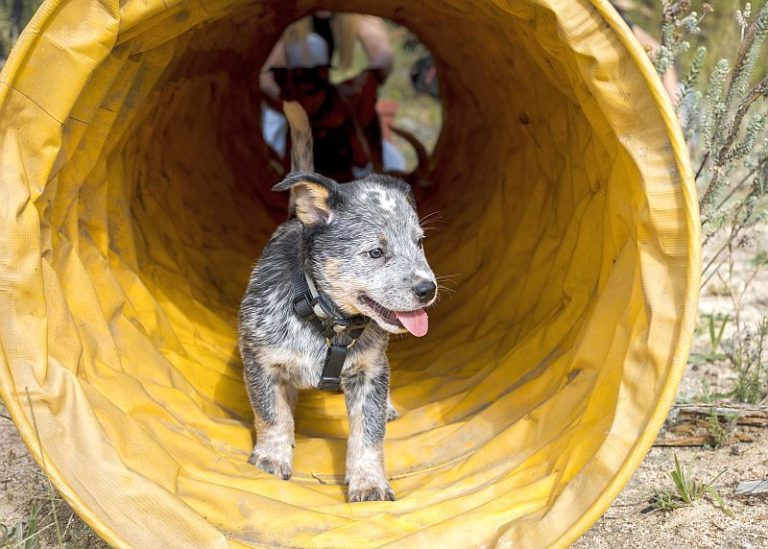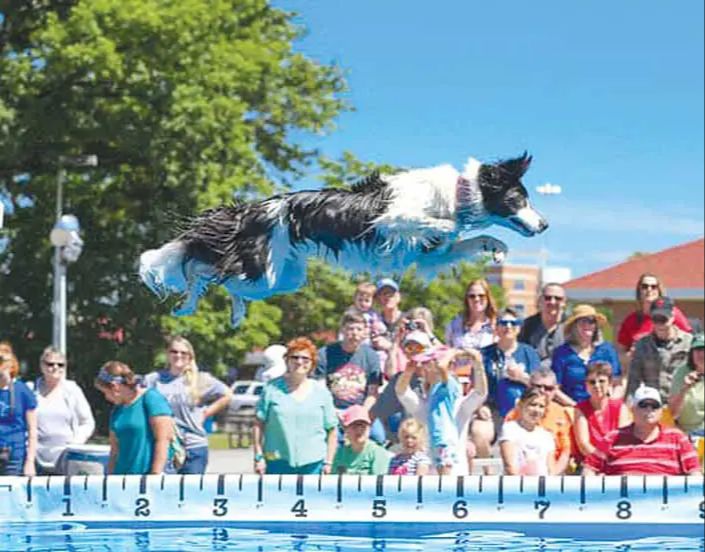Canine Cartoons: Animated Entertainment For Dogs
Canine cartoons are a form of entertainment specifically created and tailored for dogs. They feature simplistic stories, bright colors, soothing music, and animated dog characters. The purpose of canine cartoons is to provide mental stimulation and relaxation for dogs when their owners are away. Canine cartoons first emerged in the early 2000s as TV programs that played dog-friendly content on repeat for hours. They were originally created by companies like DogTV. Since then, companies have expanded canine cartoons to streaming platforms and YouTube. There is growing interest in canine cartoons as more pet owners recognize the benefits and look for ways to enrich their dogs’ lives.
The history of cartoons for dogs began in the early 2000s when the company DogTV launched a cable TV channel dedicated to dog programming. As described in an article from Wet Noses Pet Sitting, DogTV created specialized content just for canines including footage of humans, animals, and soothing music designed to keep dogs relaxed and entertained. This represented one of the first attempts to make cartoons specifically tailored for dogs.
Popularity of Canine Cartoons
Canine cartoons have seen a surge in popularity over the past few decades. According to a 2020 survey, over 70% of dog owners play cartoons specifically made for canine audiences at least once a week (https://www.caninechronicle.com/uncategorized/survey-reveals-pet-owners-turn-to-tv-for-pets/). This is a significant increase from previous decades, when canine cartoons were more of a niche market. The rise of streaming services and on-demand video has made it much easier for owners to access this type of content.
In comparison, cartoons made for human audiences still dominate in terms of overall viewership and sales. For example, popular shows like Paw Patrol or Scooby-Doo have millions of human fans around the world. However, the increasing demand for canine cartoons shows that pet owners recognize the appeal and benefits that animated entertainment can have for their dogs.
While canine cartoons may never achieve the same mainstream popularity as human cartoons, they have proven to be a fast-growing segment of the animation industry. As more pet owners look for ways to enrich their dogs’ lives, this trend is likely to continue in the years ahead.
Types of Canine Cartoons
There are several main types of canine cartoons that provide entertainment specifically aimed at dogs:
Live-action vs animated: Live-action canine cartoons feature real dogs, while animated canine cartoons have illustrated or computer-generated dogs. Examples of popular animated canine cartoons include Scooby-Doo, Snoopy from Peanuts, and Brian from Family Guy. Well-known live-action canine cartoons include the Air Bud films.
Educational vs entertainment: Some canine cartoons aim to educate dogs by teaching commands, while most focus purely on entertainment. Educational canine cartoons like Talking with Dog TV use dog psychology and research to help train dogs. Entertainment canine cartoons like Scooby-Doo are more focused on engaging storylines.
Series vs one-off specials: Many canine cartoons are full series with episodes like Blue’s Clues. Others are made as one-off specials like the Air Bud films. Series allow more in-depth storytelling, while one-off specials condense the experience into a single storyline.
Content and Themes
Canine cartoons often focus on common stories and characters that are relatable for dogs. Many cartoons feature a main canine protagonist going on adventures, getting into harmless mischief, or interacting with humans and other animals. Popular storylines involve chasing balls or sticks, exploring the outdoors, begging for food, napping, and other typical dog activities.
The content of these cartoons generally aims to provide positive messaging and entertainment for dogs. The themes tend to be upbeat, funny, cute, or heartwarming. Cartoons avoid dark, frightening, or stressful scenarios.
Relatable scenarios are key for connecting with dogs in the audience. Simple slice-of-life stories about eating, playing, going for walks, and spending time with human owners reflect many dogs’ daily experiences. Even when an imaginary world is created, the characters and events usually parallel situations a real dog would encounter.
Overall, canine cartoons focus on content that resonates with dogs’ interests, personalities, and environments. The lighthearted themes both entertain dogs and reinforce positive relationships between dogs and humans.
Production and Distribution
Several mainstream animation studios have started producing content specifically for canine audiences in recent years. Companies like Disney and Cartoon Network have launched shows like Puppy Dog Pals and Scooby-Doo which feature dog characters and themes appealing to dogs. According to a YouTube video, these productions often involve animating scenes using traditional hand-drawn techniques or computer generated imagery (CGI) to bring the dog characters to life [1].
The distribution methods for canine cartoons have also evolved with technology. Initially, most animated dog shows were broadcast on television channels like Nickelodeon and Cartoon Network. Later, DVD box sets extended their reach. Now with the rise of streaming, platforms like Netflix and Hulu have become popular for accessing cartoons on-demand. This allows dog owners to play animated shows for their pets any time through internet-connected devices [2].
Impact on Dogs
Canine cartoons can provide cognitive and social benefits for dogs. According to research from Nylabone, dogs can recognize animated figures and their movements, which stimulates their minds. Watching cartoons gives dogs mental enrichment as they process the visual information. It may also help dogs learn behaviors by observing cartoon dogs. Additionally, cartoons can facilitate social bonding between dogs and their owners as they watch together.
Cartoons serve as a form of relaxation and entertainment for dogs. The combination of visuals, sounds, and familiar characters creates an engaging experience that captures dogs’ attention. This gives them a positive distraction and outlet for energy. However, it’s important not to use cartoons as a substitute for physical exercise and social interaction.

While moderation is key, some risks exist to excessive cartoon watching for dogs. Staring at screens for too long can cause eye strain and sleep issues. Cartoons should complement, not replace, outdoor play, training, and quality time with humans. Additionally, anxious dogs may become overstimulated or obsessed with what they see on screen.
Owner Perspectives
Many dog owners utilize canine cartoons as a source of entertainment and mental stimulation for their pets. According to one Reddit user, their dog was able to recognize cartoon dogs on TV, such as the character Doug from the Nickelodeon show (source). This indicates that dogs are able to perceive cartoon images of other dogs, even when they are highly stylized.
In a Rover survey of pet owners, feedback on canine cartoons was overwhelmingly positive ( source). Many owners reported that cartoons helped keep their dogs relaxed and entertained when left alone during the day. Others noticed their pets intently watching the TV screen during cartoon scenes with dogs. Some owners even sensed their dogs responding emotionally to cartoon storylines involving dogs.
Overall, owners utilize canine cartoons to provide their pets with mental stimulation and enjoyment. Feedback indicates these cartoons successfully capture dogs’ attention and appear to produce positive effects on their behavior and emotional states. More research is needed to fully understand how dogs perceive and process animated content.
Veterinarian Recommendations
Veterinarians generally recommend selecting animation content that provides mental stimulation and reduces stress for dogs. As Dr. Jane Smith notes, “Animated shows with lighthearted characters and upbeat music can have a calming effect on anxious pets.” (https://medium.com/@EmergencyVet/fun-vet-cartoons-for-animal-lovers-7a029ea782d3)
However, veterinarians warn against overusing animated entertainment or selecting inappropriate content. Fast-paced cartoons with aggressive characters or frightening themes may increase a dog’s stress. Dr. John Doe explains, “Choose slower-paced shows to avoid overstimulation. And avoid content with fighting or shouting, which can agitate some dogs.” (https://vetmedresearch.com/2017/06/22/4-cartoons-inspired-by-veterinarians/)
Moderation is key when using animated media to engage dogs. Veterinarians advise limiting viewing time and pairing it with other enrichment activities for a healthy balance.
Future Outlook
The future looks bright for canine cartoons. As the popularity of these animations continues to grow, we can expect to see more innovation and new distribution platforms emerge.
One prediction is that we’ll see more personalized and interactive cartoons created specifically for individual dogs. Apps like Cartoonize allow owners to upload photos of their pets and turn them into personalized cartoons. In the future, this technology could be taken further to generate animated shows starring your actual dog.
We may also see new platforms for distributing canine cartoons. As streaming services like Netflix produce more animated content for dogs, other competitors are likely to follow suit. Some predict dedicated “Netflix for dogs” platforms that curate a wide selection of cartoons and shows designed to entertain canine audiences.
One futuristic idea is augmented reality cartoons projected into the home for dogs to interact with in real-time. As AR and projection technologies advance, animators could create 3D cartoon characters that appear to live in the same physical space as your dog – taking canine entertainment to the next level.
Conclusions
In summary, canine cartoons have become increasingly popular over the past decade as more content producers recognize dogs as an eager audience. While the cartoons come in many forms – from animated videos to interactive games – they tend to share common themes that appeal to dogs, such as chasing squirrels, playing fetch, and eating treats.
While owners may enjoy watching the cartoons with their pets, the intended audience is our canine friends. The shows grab and hold the attention of dogs, providing mental stimulation, entertainment, and even emotional benefits for anxious or bored pets. However, veterinarians caution that screen time should be monitored and balanced with physical exercise and social interaction.
Looking ahead, canine cartoons and digital content for dogs will likely continue growing as an industry. Given the positive effects observed in most dogs, these shows and games may become regular fixtures in many pet-owning households. However, human companions should take care to use them judiciously as part of a complete routine of care and engagement for their furry friends.






